The age-old myths and legends of “the battle between angels and demons” have been passed down through generations.
What if these were not mere metaphors or allegories but actual events recorded in ancient manuscripts?
These texts are said to contain astonishing details that challenge our understanding of history.
How should we interpret these moments when angels and demons allegedly clashed?
And could such records still hold relevance and influence in our modern world?
This article delves into this mysterious theme, unraveling the secrets hidden within these ancient documents.
- Ancient manuscripts documenting the battle between angels and demons
- The credibility of the texts and modern scientific perspectives
- The spread of urban legends surrounding angels and demons
- Implications and significance for contemporary society
What is the Battle Between Angels and Demons Recorded in Ancient Texts?
The “battle between angels and demons” recorded in ancient texts is a fascinating mystery that transcends religion and mythology.
These texts do not merely remain as parables or myths; they include specific dates and events recorded in remarkable detail.
Particularly notable is the significant overlap between these accounts and myths or religious stories from various cultures, which seem too similar to be mere coincidence.
As a result, these records are often debated as reflections of real events rather than mere tales.
Another point of intrigue is how these texts have been preserved and passed down to the present day.
Many scholars believe that the influence of diverse cultures and religions contributed to their survival.
Such enigmatic records continue to inspire new interpretations and remain a popular topic in urban legends.
Next, we will delve deeper into the content and context of these ancient texts.
The Origins and Roles of Angels and Demons
The origins of angels and demons are a blend of ancient text descriptions and religious interpretations.
Angels are depicted as messengers of God, embodying goodness and order.
Conversely, demons symbolize chaos and corruption, tempting humans into sin.
How these two opposing entities are portrayed in ancient texts is a subject worth exploring.
The Depiction and Purpose of Angels
In many ancient texts, angels are described as luminous beings tasked with guarding humans and delivering God’s will.
Additionally, archangels with combative roles appear, playing pivotal roles in battles against demons.
It is debated whether these depictions are purely symbolic or reflective of real events.
Cultural variations in angelic depictions also add an intriguing layer to their interpretation.
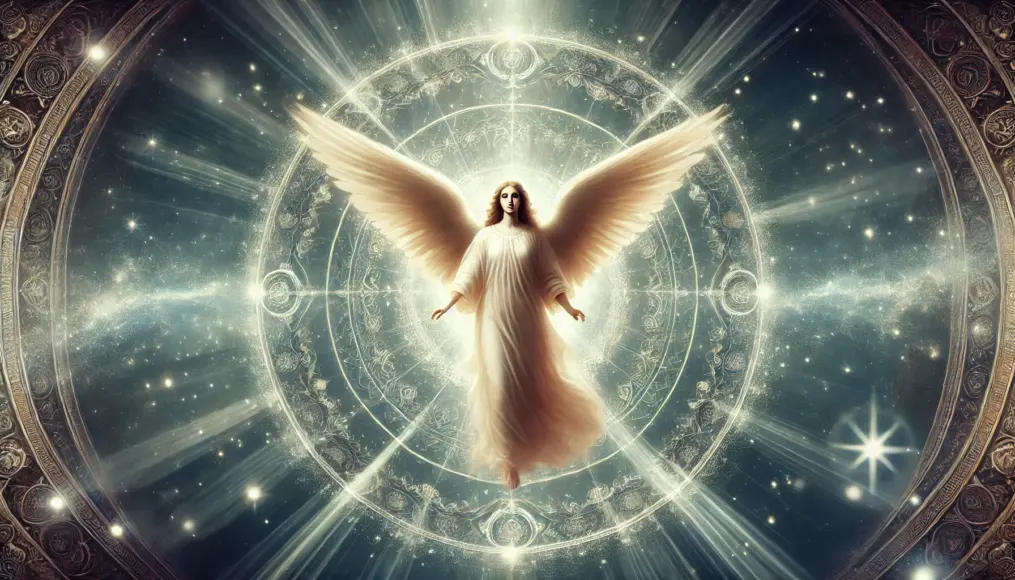
Characteristics and Influence of Demons
Demons are recorded as entities driving human corruption.
Their terrifying appearances and names often carry specific meanings, varying across cultures and regions.
Some texts detail the behaviors and objectives of demons, which may have influenced magic and occult practices.
Investigating how these records spread and impacted subsequent generations is a compelling avenue of inquiry.
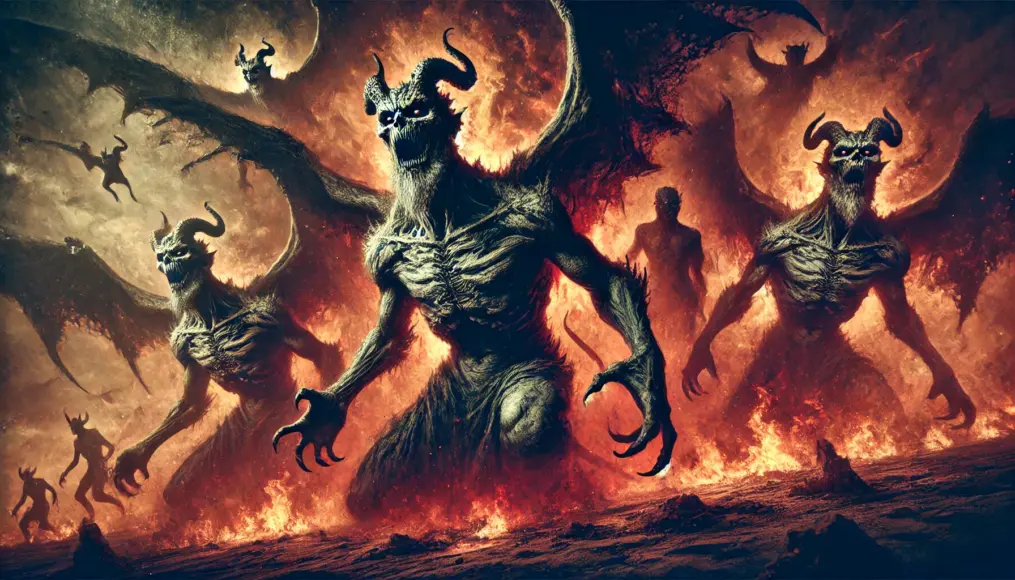
The Content of Battles Recorded in Ancient Texts
Ancient texts document battles between angels and demons taking place both in the heavens and on earth.
Specific locations and dates are recorded in detail, leading to debates about whether these accounts reflect actual events.
These battles may also mirror societal structures and cultures of their time, adding a historical dimension to the records.
Could these accounts transcend mythology and point to historical truths?
Battles in Heaven and on Earth
Some texts describe battles between angels and demons not only in the heavens but also on earth.
The influence of these battles on natural phenomena and societal structures is particularly intriguing.
These records may have evolved into legends and myths that spread over time.
With advancements in scientific research, the authenticity of these accounts might one day be verified.
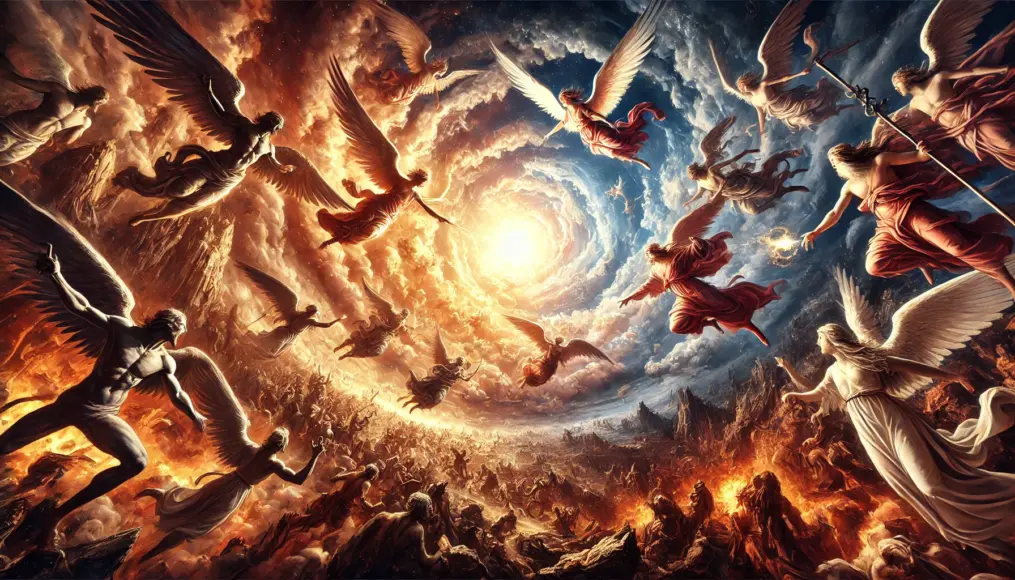
The Outcomes and Their Impact
The texts often conclude with angels triumphing, but they also record significant changes that followed these victories.
These records provoke discussions about how they influenced modern environments and societies.
Additionally, exploring how these triumphs were reflected in myths, religions, and cultural traditions is a fascinating area of study.
Further analysis of these records may provide fresh perspectives on these ancient stories.
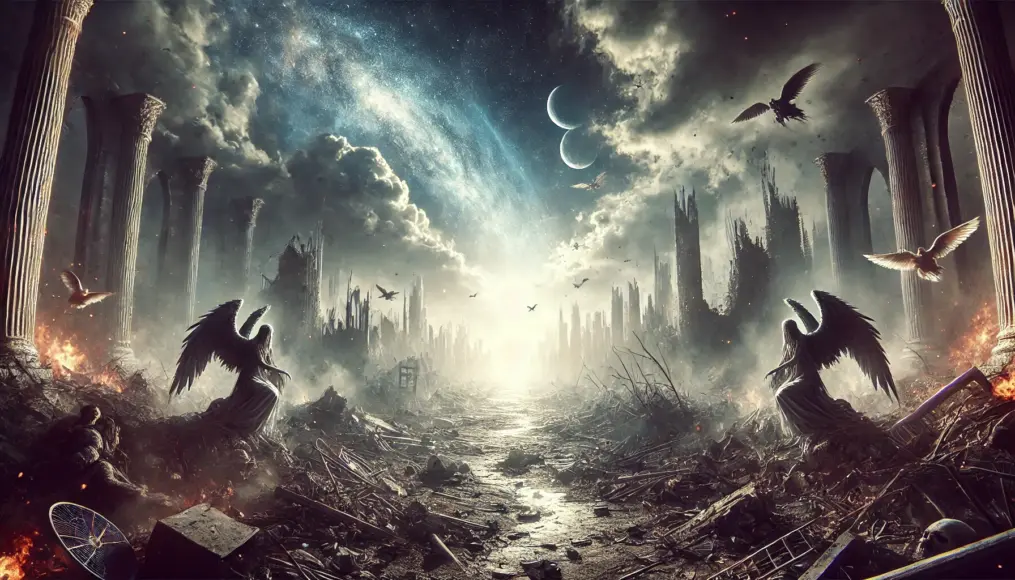
Details and Credibility Recorded in Ancient Documents
Ancient documents describe the epic battles between angels and demons.
These records are not limited to myths or religious tales but are suggested to reflect real events.
Notably, texts like the “Book of Enoch” and the “Dead Sea Scrolls” detail how heavenly beings and fallen angels impacted the Earth.
The inclusion of specific names of angels and demons in these records lends further credibility to these accounts.
The Conflict Between Angels and Demons in the Book of Enoch
The Book of Enoch mentions leaders of fallen angels such as “Azazel” and “Semyaza.”
Azazel is said to have taught humans the art of weapon-making and techniques of warfare, influencing the evolution of civilizations.
Semyaza, meanwhile, led other fallen angels to descend to Earth, causing chaos through their interactions with humanity.
The detailed mention of these names strengthens the narrative’s sense of authenticity.
Azazel’s Actions and Influence
Azazel introduced humans to the knowledge of metalworking, enabling them to create weapons.
While this advanced human civilization, it also became a source of conflict and warfare.
The texts describe Azazel as being punished for disrupting the heavenly order.
When connected to modern technological advancements, these actions become particularly fascinating.
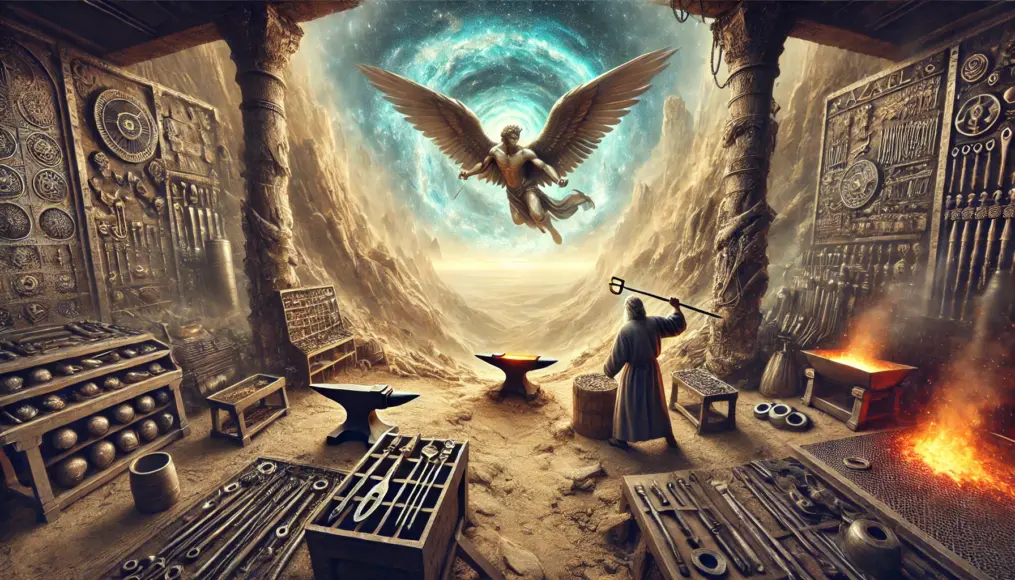
Semyaza and the Bond Among Fallen Angels
Semyaza led other fallen angels in breaking celestial rules to descend to Earth.
Their purpose was to bond with humans, which resulted in great upheaval.
This event is considered a turning point in human history.
The unity and consequences of the fallen angels’ actions may offer lessons even today.
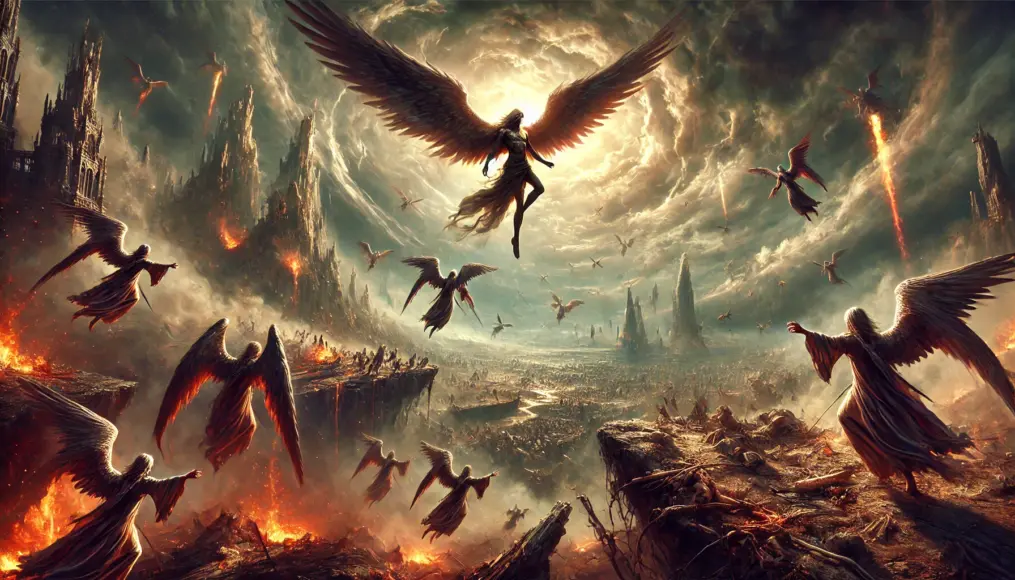
The Dead Sea Scrolls and Records of the Battle
The Dead Sea Scrolls describe the roles of angels like “Michael” and “Raphael” in their battles against demons.
Michael is known as the commander of the heavenly armies, fighting demons under divine authority.
Raphael, the healing angel, provided support by saving the wounded during these battles.
The inclusion of such specific names adds a level of depth that goes beyond mere mythology.
Michael’s Role and Leadership
Michael led the angels in fierce battles against demons.
His leadership symbolized a clear boundary between good and evil.
Even today, Michael’s name is venerated across cultures and religions, signifying his enduring influence.
These accounts suggest that Michael is not just a mythical figure but a deep subject of faith.
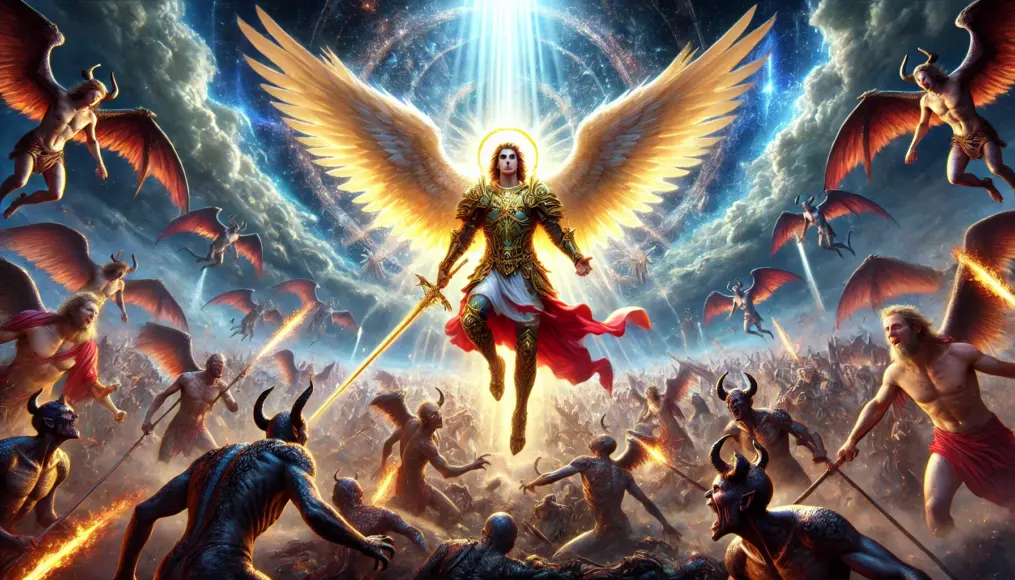
Raphael’s Healing and Support in Battle
Raphael healed injured angels, playing a critical role in maintaining the battlefront.
His actions brought hope and salvation even amidst conflict.
The Dead Sea Scrolls highlight Raphael’s indispensable support to the angels.
These descriptions emphasize the importance of healing and symbolize hope.
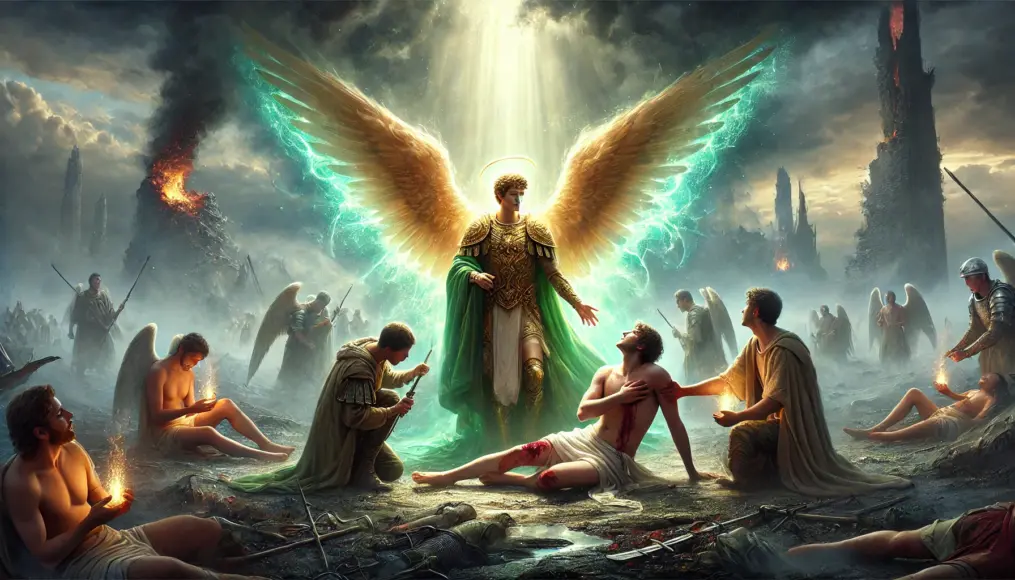
Urban Legends and Interpretations of Angels and Demons
The ancient manuscripts detailing the battles between angels and demons have sparked numerous urban legends.
These stories have played a significant role in shaping religious beliefs and cultural narratives.
For instance, the tale of Lucifer’s fall from heaven symbolizes the eternal struggle between good and evil.
People interpret these stories not only as myths but also as metaphors for the moral conflicts within human society.
The Urban Legend of Lucifer and Michael’s Battle
The battle between Lucifer and Archangel Michael is widely documented in religious texts and ancient manuscripts.
This epic clash marks the disruption of celestial order and the birth of evil.
Some urban legends suggest that Lucifer, even after his banishment, continues to influence the mortal realm.
This notion is frequently explored in modern films and literature, captivating the imaginations of audiences worldwide.
The Role and Impact of Lucifer
Lucifer is often depicted as a symbol of rebellion and free will.
In certain interpretations, he is credited with bringing knowledge and technology to humanity.
This perspective connects ancient advanced civilizations with the legend of demons, creating a compelling urban legend.
Additionally, Lucifer’s charisma has been portrayed differently across various cultures and religious beliefs.
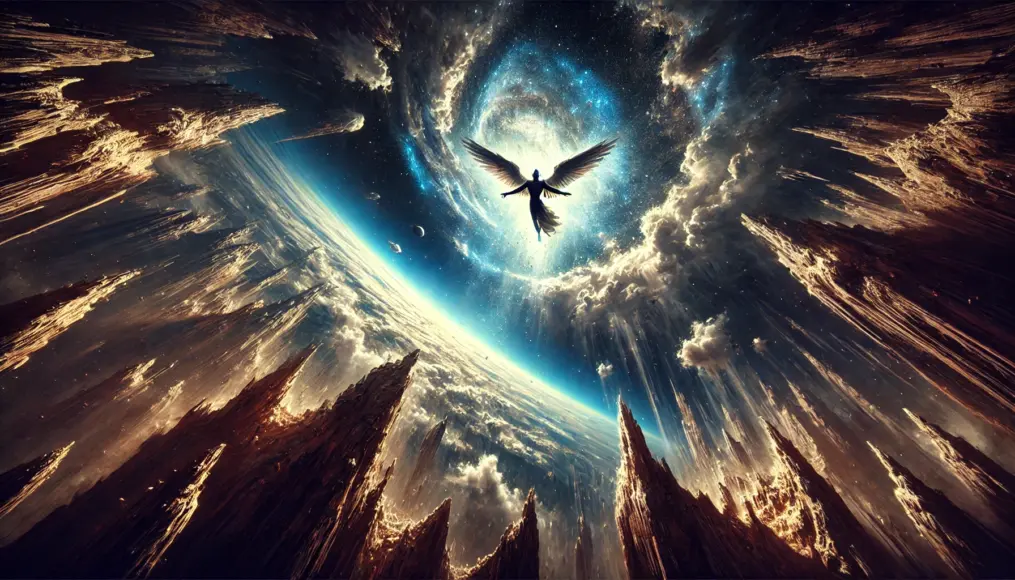
The Guidance of Angels and Their Influence on Humanity
Conversely, angels like Michael and Raphael are depicted as symbols of justice and healing.
They confront fallen angels and are seen as beacons of hope for humanity.
Michael, in particular, is often portrayed as a sword-wielding protector in religious art and sculptures.
These angelic stories serve not only as spiritual solace but also as moral guides for human behavior.
The Connection Between Michael and Humanity
As the leader of the angels, Michael is believed to have led the fight against fallen angels.
Manuscripts suggest that he has always played a role in protecting humanity from evil.
These narratives not only serve as urban legends but also hold religious significance, influencing cultural and spiritual beliefs.
Michael’s presence continues to inspire hope in the triumph of justice for many.
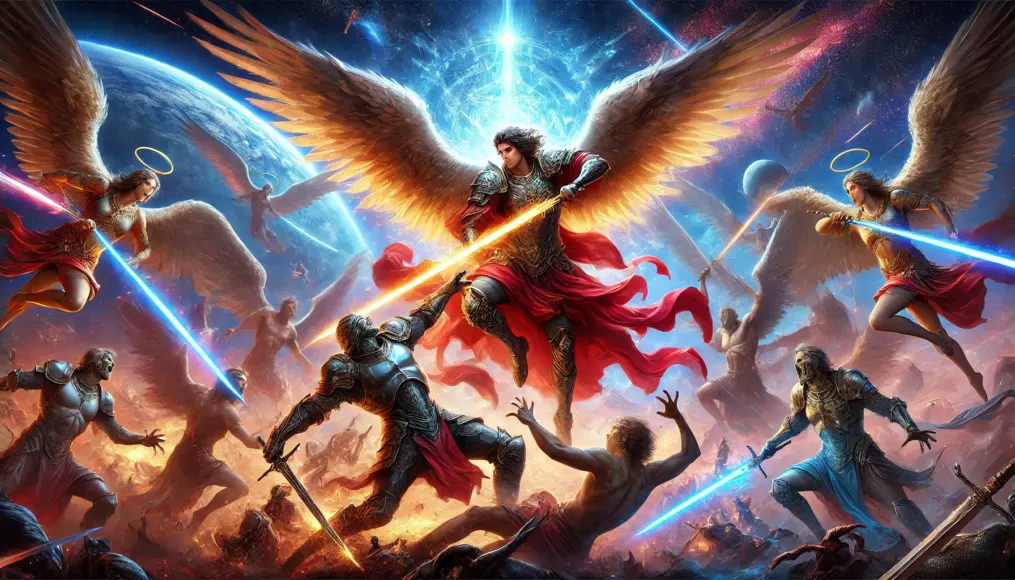
The Message Behind the Battle Between Angels and Demons
The battle between angels and demons symbolizes the timeless theme of good versus evil.
The reason this conflict is recorded in ancient manuscripts may be to highlight humanity’s constant struggle between these moral extremes.
These stories, while often considered urban legends, also carry profound philosophical meanings.
Moreover, the lessons conveyed through these manuscripts continue to offer insights relevant even today.
The Philosophical Significance of the Battle
The depiction of this battle is not merely a story but reflects human internal conflicts and moral choices.
It raises questions about how one should live in a world where both good and evil coexist.
This theme has also been a subject of contemplation for philosophers and theologians throughout history.
As a result, the battle between angels and demons remains a universal point of fascination across time.
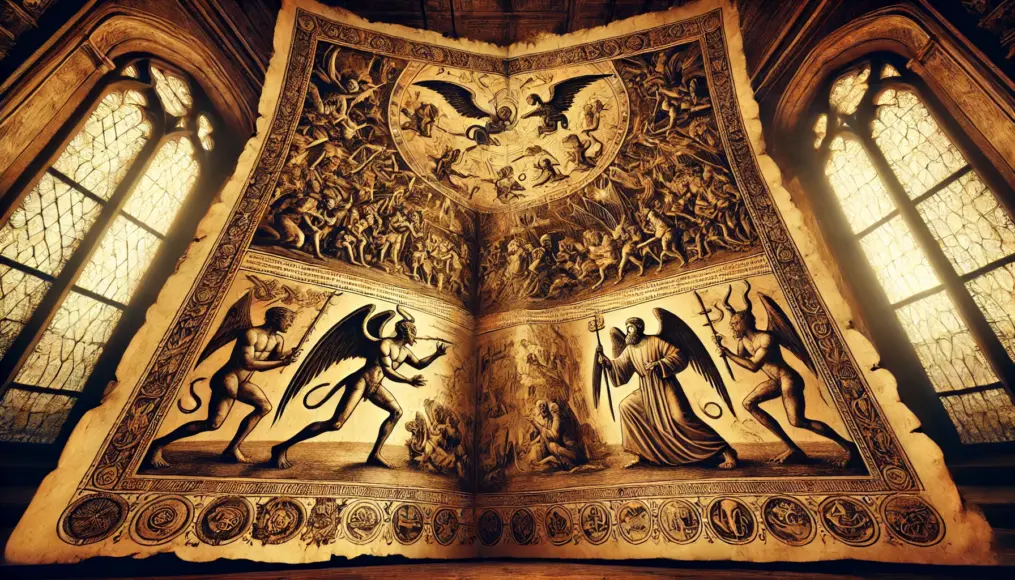
The Influence and Significance of Angels and Demons in Modern Society
The battles between angels and demons recorded in ancient manuscripts continue to influence modern society in various ways.
In many religions and cultures, angels symbolize good, while demons represent evil, contributing to the formation of faith and ethics.
This symbolism has deeply ingrained the concepts of good and evil into our daily lives.
Furthermore, the eternal conflict between angels and demons remains a popular theme in entertainment, such as movies and literature.
The Symbolic Impact of Angels and Demons on Society
Angels and demons are more than just characters in stories.
Angels symbolize salvation and guardianship, playing vital roles in religious rituals and prayers.
On the other hand, demons symbolize temptation and corruption, emphasizing the importance of ethics and moral codes.
Considering how these symbols shape societal values and behavioral norms offers an intriguing perspective.
The Role of Angels in Education and Religious Rituals
Angels also play an essential role in children’s education.
For example, stories featuring angels overcoming challenges teach children courage and a sense of justice.
In religious rituals, angels often appear as messengers conveying divine will.
This positions angels as symbols of hope and guidance for many people.
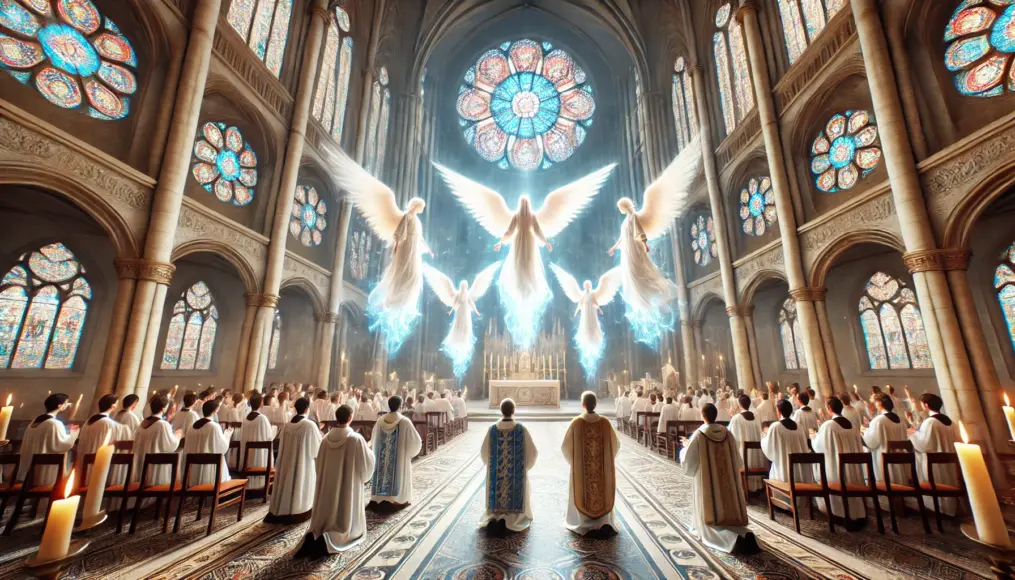
The Ethical Emphasis Highlighted by Demons
Demons serve as moral benchmarks for individuals making ethical decisions.
Themes like “resisting temptation” are often depicted through the symbolism of demons.
In this way, demons play a role in fostering moral awareness in individuals and communities.
The depiction of demons acts as a crucial element in promoting caution and reflection.
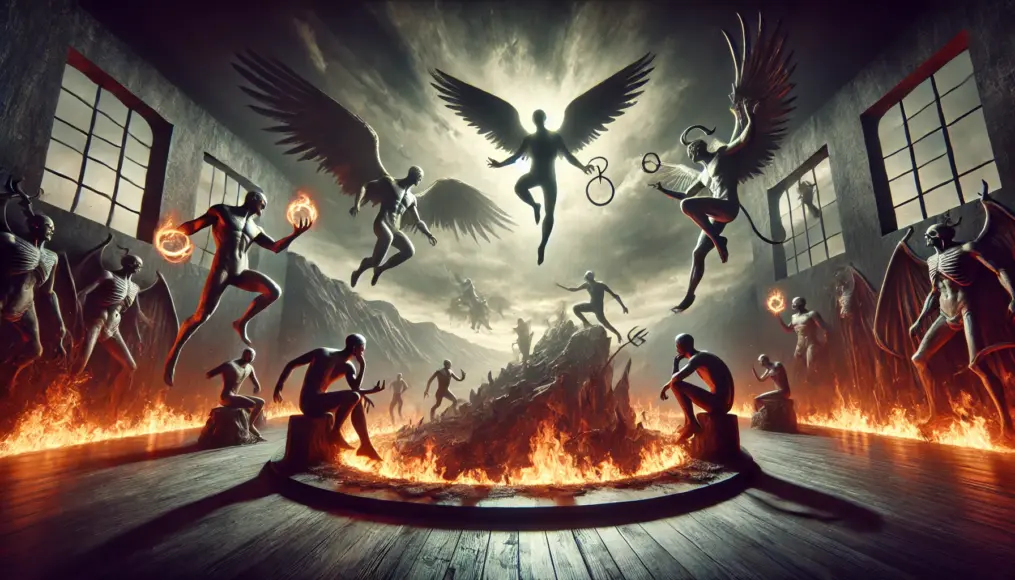
The Reinterpretation of Angels and Demons in Modern Culture
In contemporary culture, the symbolism of angels and demons has been reinterpreted in various ways.
In areas like fashion and music, both figures are frequently used as motifs, showcasing their evolving diversity.
Psychologically, angels symbolize the “good side” of humanity, while demons represent “impulsive tendencies.”
These reinterpretations provide opportunities to reflect on our inner selves.
Angels and Demons in Subculture
In music and fashion, the duality of good and evil symbolized by angels and demons is a central theme.
This perspective functions as a symbol of individuality and self-expression in youth culture.
Designs featuring angels and demons continuously produce fresh interpretations over time.
This ensures that the theme of the battle between good and evil remains ever relevant.

The Psychological Perspective of Angels and Demons
From a psychological standpoint, angels and demons are seen as symbols of human inner conflict.
For instance, angels are interpreted as representing altruistic actions and self-actualization, while demons signify selfish desires and impulses.
Reflecting on these interpretations may encourage people to reevaluate their thoughts and actions.
By understanding angels and demons as inner symbols, one can gain a deeper appreciation of human complexity.
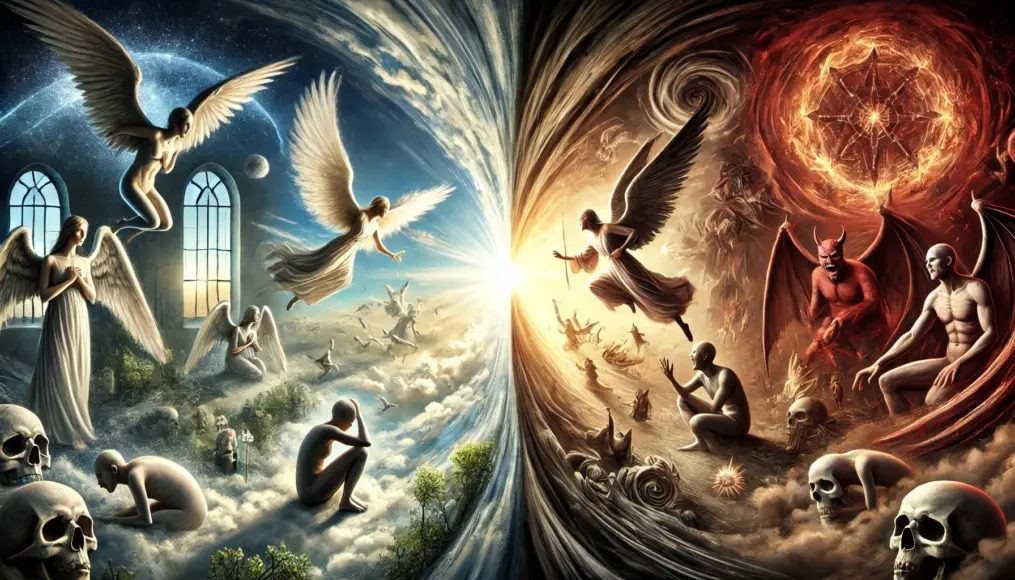

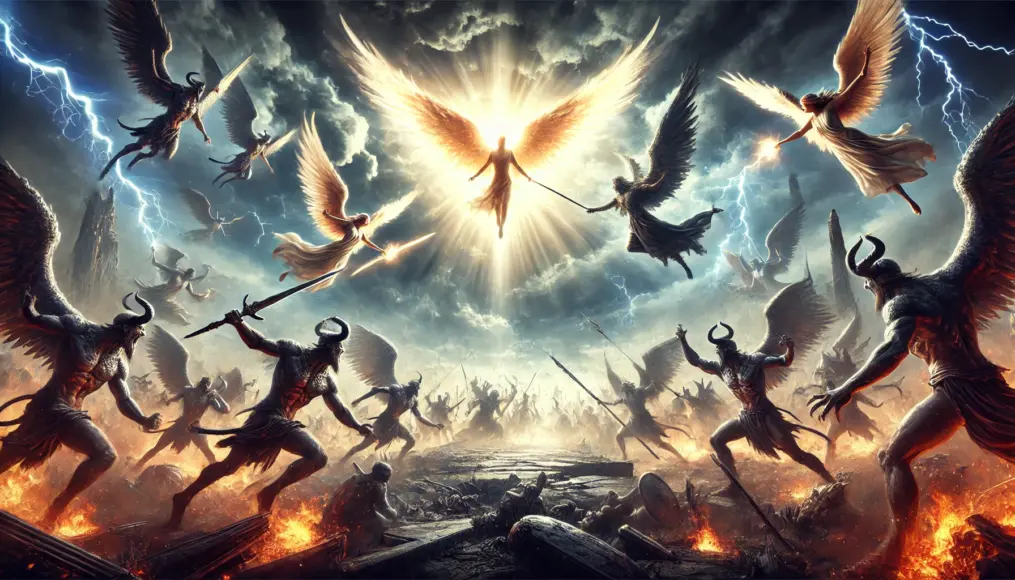
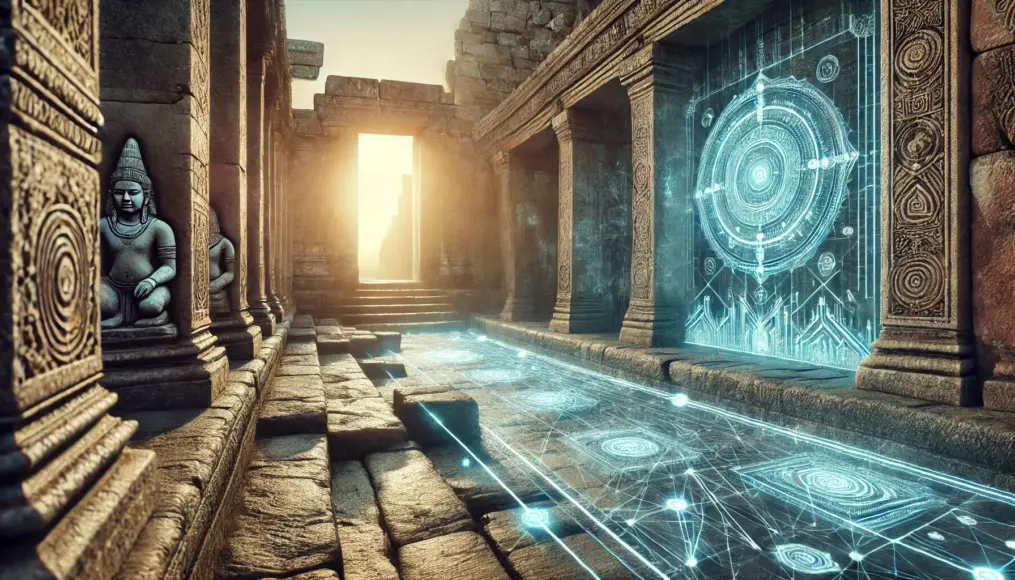
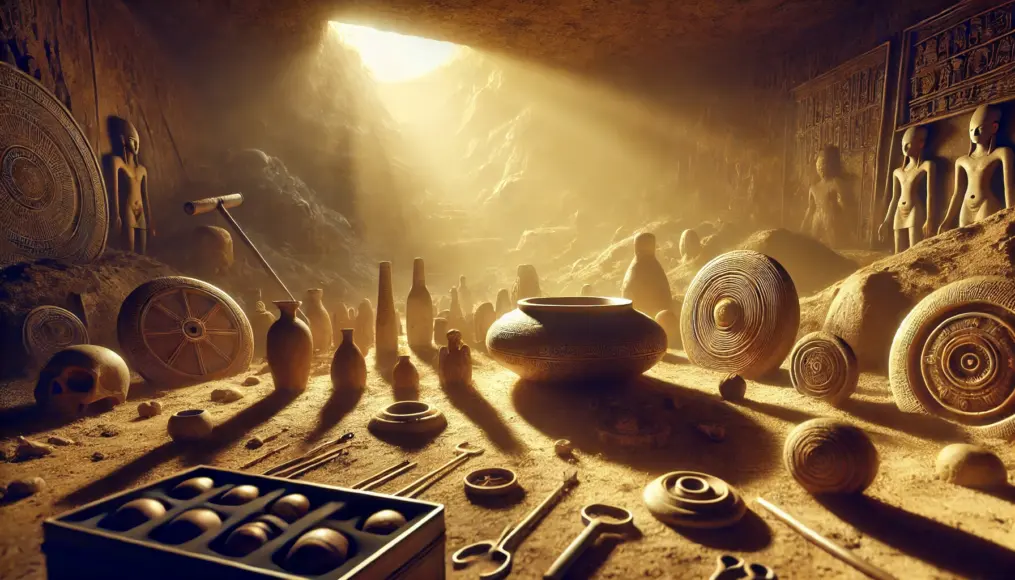
Comment